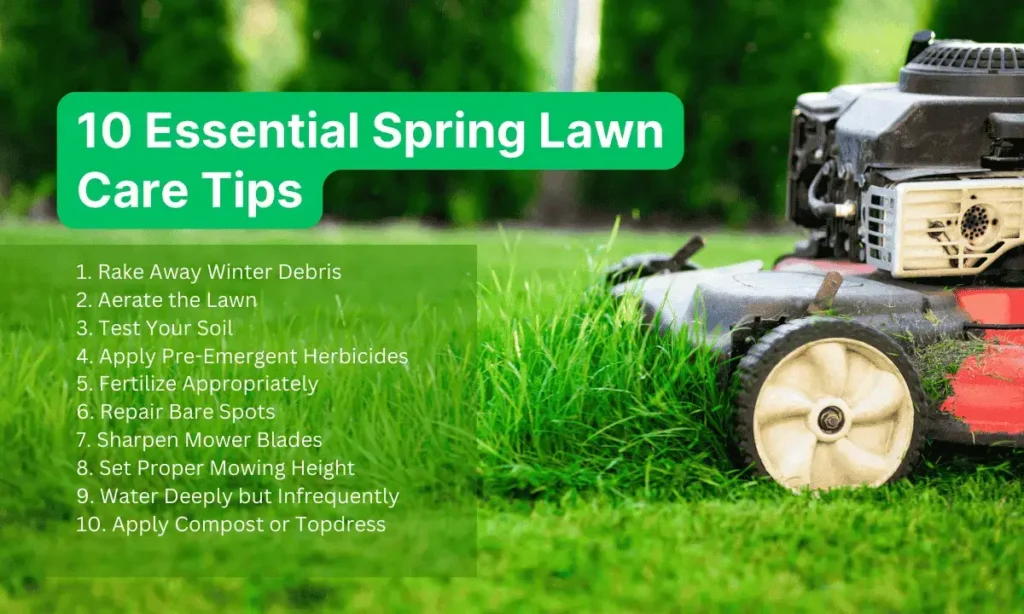Spring is the perfect time to give your lawn the care it needs to thrive throughout the year. A little effort now will reward you with a lush, green yard in the months ahead. Whether you’re a seasoned lawn care enthusiast or a homeowner just starting out, these spring lawn care tips will help you maintain and protect your lawn effectively. Let’s get started!
1. Rake Away Winter Debris
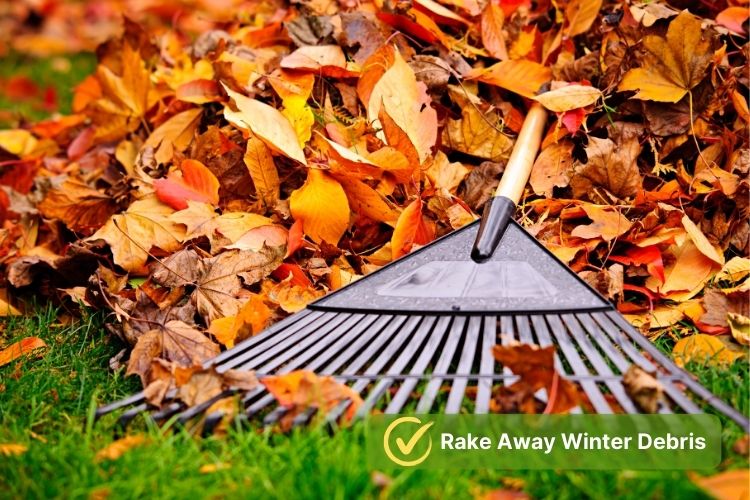
Winter can leave behind a mess of leaves, twigs, and other debris. Clearing this debris allows sunlight and air to reach the soil, which is essential for healthy grass growth. Plus, raking helps loosen any matted grass, preventing mold and lawn disease. Use a metal rake for deep cleaning, and consider dethatching if the thatch layer exceeds half an inch.
2. Aerate the Lawn

Lawn aeration improves soil health by creating holes that allow air, water, and nutrients to penetrate roots. This process reduces soil compaction and enhances grass growth. Aeration is most effective during the growing season, especially in spring or early fall, depending on your grass type. Contact our lawn care services in Philadelphia for a healthy & vibrant lawn.
Compacted soil can choke your lawn’s root system by restricting water, nutrients, and air. Use a core aerator to create small holes in the soil. This process promotes deeper root growth and improves overall lawn health. For best results, aerate when the soil is moist but not soggy. Early spring lawn care tips often emphasize aeration as a crucial step to ensure your grass can grow thick and lush.
3. Test Your Soil

Healthy lawns start with healthy soil. A soil test measures pH levels and nutrient content, letting you know what your lawn needs. Most grass types thrive with a soil pH between 6.0 and 7.0. You can purchase a test kit or send a sample to a local extension office for analysis. Based on the results, you can add lime to raise the pH or sulfur to lower it, ensuring your grass gets the nutrients it needs.
4. Apply Pre-Emergent Herbicides

Weeds like crabgrass can quickly take over your lawn if left unchecked. Applying a pre-emergent herbicide in early spring can prevent weed seeds from germinating. Timing is crucial—apply when soil temperatures reach around 55°F for several consecutive days. Combine this step with light watering to activate the herbicide, but avoid heavy watering that could wash it away.
5. Fertilize Appropriately
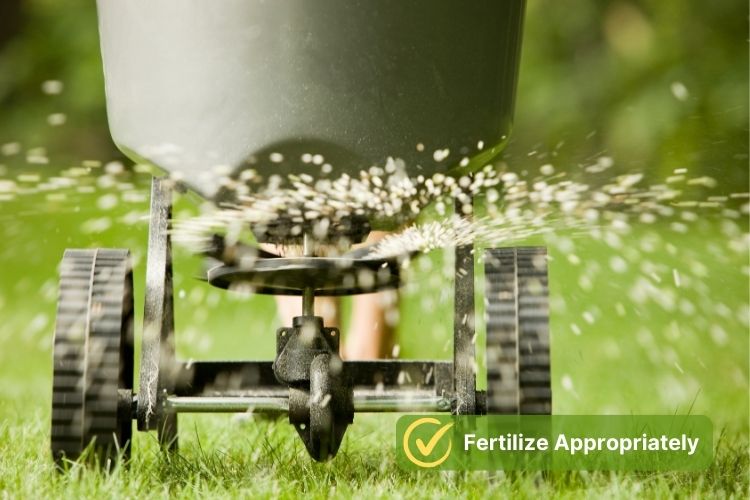
Your lawn needs proper nourishment to grow strong and vibrant. Apply a slow-release fertilizer that’s appropriate for your grass type. Be careful not to over-fertilize, as this can cause excessive growth and lead to disease. Using nutrient-rich compost as a topdress can also enhance soil fertility. A 10-10-10 fertilizer (equal parts nitrogen, phosphorus, and potassium) is a good starting point for most lawns.
6. Repair Bare Spots

Winter damage or heavy foot traffic can leave your lawn with bare, patchy areas. Reseed these spots with a grass seed blend that matches your existing lawn. Lightly rake the soil, scatter the seeds, and keep the area moist until the new grass is established. Overseeding thin areas helps ensure a uniform and weed-free lawn. For quicker results, use a starter fertilizer when reseeding.
7. Sharpen Mower Blades
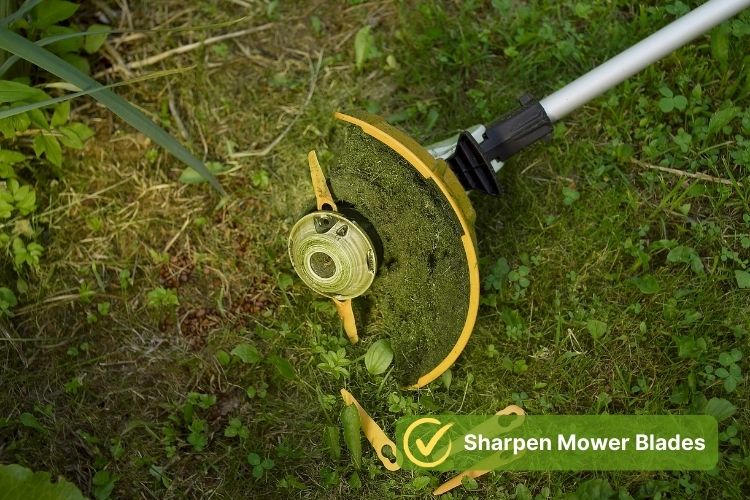
Dull mower blades tear the grass, leaving jagged edges that make your lawn more susceptible to diseases. Sharpen your blades at the start of the season to ensure clean cuts. Aim to sharpen your lawnmower blades every 20-25 hours of mowing. For added precision, check the mower height and adjust it based on your grass type.
8. Set Proper Mowing Height
Cutting grass too short weakens it and encourages weed growth. Set your mower to cut at the recommended height for your grass type, typically between 2.5 and 3 inches. Taller grass shades the soil, helping it retain moisture and resist weeds. Edging your lawn during this process adds a tidy and well-maintained appearance. Grass cut too low may also expose the soil to direct sunlight, leading to dehydration and weed infestation.
9. Water Deeply but Infrequently
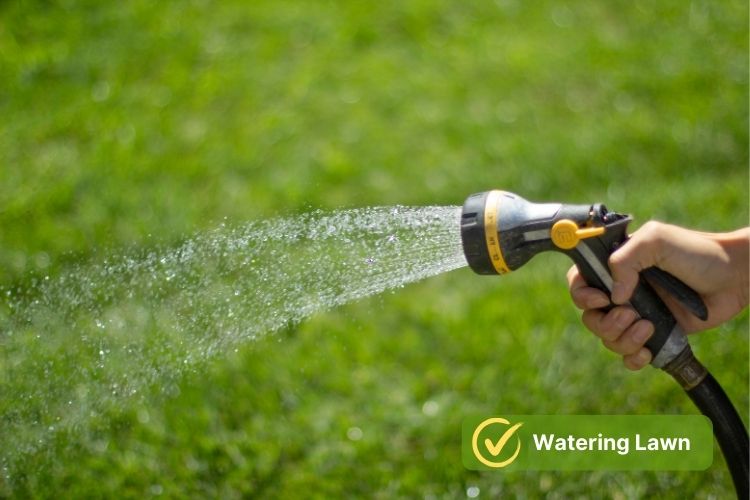
Spring showers often provide enough water, but if your lawn needs supplemental watering, do it right. Water deeply—about 1 inch per session—to encourage deep root growth. Avoid frequent, shallow watering, which can lead to stressed and weak roots. Using a sprinkler system can help maintain a consistent lawn care schedule. Water early in the morning to reduce evaporation and prevent fungal diseases.
10. Apply Compost or Topdress
Topdressing your lawn with a thin layer of organic compost improves soil structure and adds valuable nutrients. Spread no more than ¼ inch of compost evenly over your lawn to avoid smothering the grass. Mulch can also be applied around flower beds and trees to retain moisture and enhance the landscape. This step enriches the soil and promotes microbial activity, giving your grass a nutrient-rich foundation.
Bonus Tip: Monitor Your Lawn Regularly
Keep an eye on your lawn for signs of pests, weeds, or nutrient deficiencies. Early detection and treatment can prevent minor issues from turning into major problems. Regularly removing thatch and pruning nearby plants can also help your lawn stay healthy. Maintaining a consistent lawn care schedule ensures no detail goes unnoticed, leading to long-term success.
The Reward of Spring Lawn Care
With these 10 early spring lawn care tips, you can enjoy a healthy, vibrant lawn that boosts your home’s curb appeal. Remember, a little effort in the spring goes a long way toward ensuring a beautiful yard all year long. These early spring lawn care tips will set you up for success. Get started today, and watch your lawn transform into a thick, green paradise!
For more tips or professional assistance, don’t hesitate to reach out to local lawn care experts in Philadelphia. Happy gardening!

